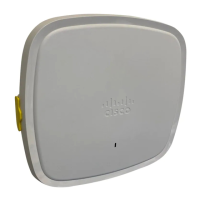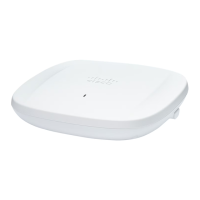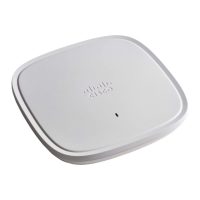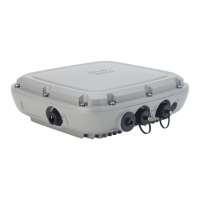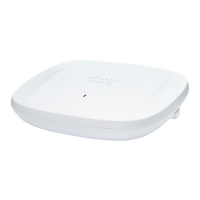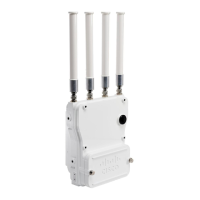15
Cisco Catalyst 9136I Series Access Points
10 Powering the Access Point
Caution Ensure that the AP is powered using a UL-compliant PoE power source. You must connect the unit only
to PoE network without routing to the outside plant.
The AP can be powered only through Power-over-Ethernet (PoE) using the following:
802.3at (PoE+): Any 802.3at (30.0 W) compliant switch port or Cisco Power Injector AIR-PWRINJ7=
802.3af: Any 802.3af (15.4 W) compliant switch port
Note If 802.3af is used, both the 2.4 GHz and 5 GHz radios will be reduced to 1x1 and Ethernet will be
downgraded to 1 GbE. The USB port will also be off.
802.3bt: Any 802.3bt compliant switch port
Cisco Universal PoE (Cisco UPOE)
Caution Use the recommended AC power adapter from the Cisco accessories list with the device to reduce safety
issues.
11 Configuring and Deploying the Access Point
This section describes how to connect the access point to a controller. Because the configuration process takes place
on the controller, see the Cisco Wireless Controller Configuration Guide for additional information.
The Controller Discovery Process
Note • The controller must be running release IOS-XE 17.x to support C9136AXI. For more information, visit
the access point data sheet available on Cisco.com at
https://www.cisco.com/c/en/us/products/collateral/wireless/catalyst-9100ax-access-points/guide-c07-742311.
html
• You cannot edit or query any access point using the controller CLI if the name of the access point contains
a space.
• Make sure that the controller is set to the current time. If the controller is set to a time that has already
occurred, the access point might not join the controller because its certificate may not be valid for that
time.
Access points must be discovered by a controller before they can become an active part of the network. The access
point supports these controller discovery processes:
Locally stored controller IP address discovery—If the access point was previously joined to a controller, the IP
addresses of the primary, secondary, and tertiary controllers are stored in the access point non-volatile memory. This
process of storing controller IP addresses on an access point for later deployment is called priming the access point.
For more information about priming, see the “Performing a Pre-Installation Configuration” section on page 11.
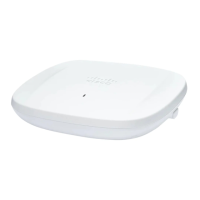
